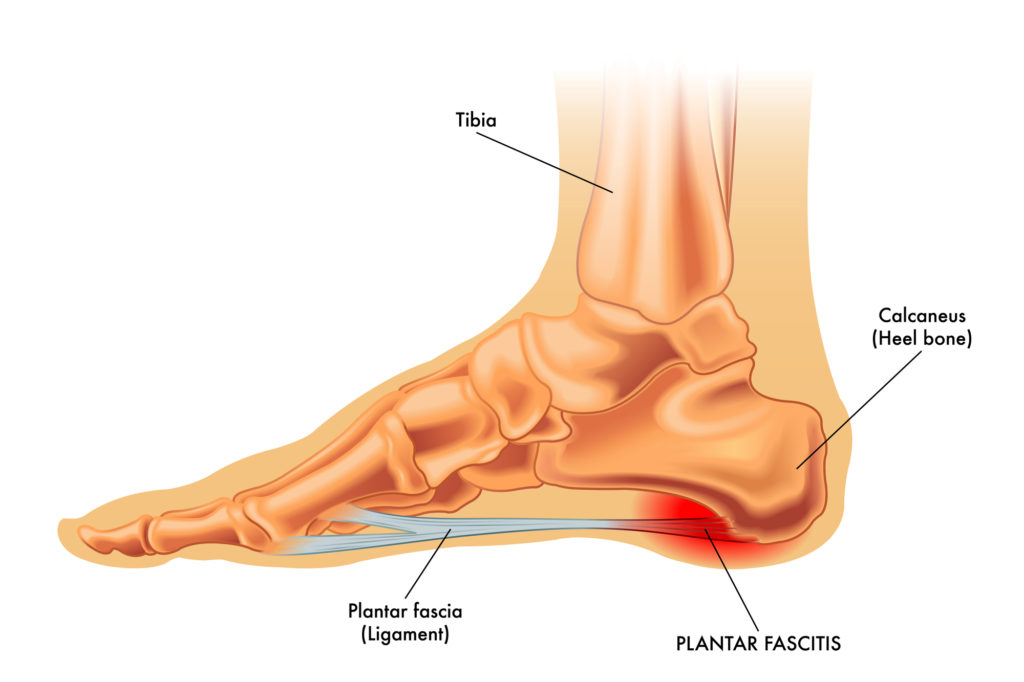So when is Plantar Fasciitis NOT Plantar Fasciitis?
In my practice I see a lot of people who come in with heel pain,
They will say something like my heel hurts:
- I think I’ve got plantar fasciitis
- I’ve googled it and I’ve got plantar fasciitis
Or
- My friend, brother, Mum, etc has said I’ve got plantar fasciitis
Reviewing the anatomy of the foot we can see that, the plantar fascia is the structure which is at the base of the foot. It works like a bowstring to support the arch. The red area on the picture below is the most common place where people feel heel pain.

But is your heel pain really Plantar Fasciitis?
The suffix ‘itis’ (as in Plantar Fasciitis) implies inflammation of the fascia, but we know these days that inflammation is often not the only the cause of pain or dysfunction in the plantar fascia.
So, according to the most recent research, we know that the using the term ‘Plantar Fasciitis’ for all plantar heel pain is, at best, likely misleading and, at worst, just incorrect.
A more accurate description of your heel pain symptoms would be a ‘Plantar Fasciopathy‘ (literally meaning, pain arising from the fascia) or Plantar Heel Pain (PHP) to describe pain in the heel.
These terms encompasses a variety of pathological and anatomical features relating to heel pain including plantar fascia inflammation, degeneration or thickening, heel fat pad pathology, nerve irritation, and heel spurs.
Additionally, individuals with Plantar Heel Pain (PHP) may present with impairments in foot function, ankle or hallux dorsiflexion range of motion and lower leg/foot muscle performance. Even factors like stress, depression and obesity can have impact.
Plantar Heel Pain (PHP) symptoms may include,
- heel or arch pain when you get out of bed and put your foot to the floor first thing in the morning?
- limping for the first few steps in the morning?
- pain in the heel that eases off once you have got ‘warmed up’ and moving (for example after a few steps)?
- heel pain after sitting or resting and then starting walking or standing?
- soreness in the heel after going for a jog or playing sport?
- pain in your arch or heel get worse after a day at work on your feet?
The key to any treatment success is early intervention and finding out the ‘why’ of the problem. This means accurate diagnosis and treating the true cause of the pain. Unfortunately, the human way is to think it will get better, it’s only a niggle, I will rest and it will settle. It’s this thinking that leads to the excessive inflammatory phase and interference with the repair phase and ultimately conditions like plantar fasciosis.
Although symptom management can make you feel better fixing the cause is the key to lasting results. So if you are frustrated with your lack progress? Or would like further information or a second opinion on your individual situation get in touch and we’ll point you in the right direction
More blog posts…






Hello Michael,
Well, your article has made me realize that, I can’t take my feet for granted. The first thing I am going to do is find a Podiatrist in my city.
Thank You!